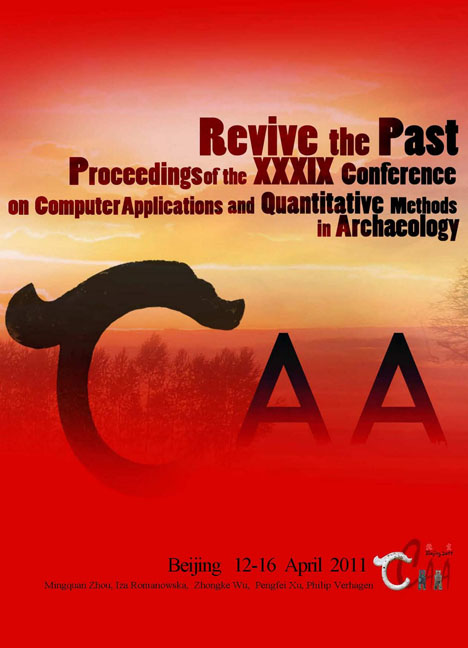 Revive the Past
Revive the Past Published online by Cambridge University Press: 23 June 2021
Abstract:
Human movement constitutes a fundamental part of the archaeological process, and of any interpretation of a site's usage; yet there has to date been little or no consideration of how movement observed (in contemporary situations) and inferred (in archaeological reconstruction) can be documented. This paper reports on the Motion in Place Platform project, which seeks to use motion capture hardware and data to test human responses to Virtual Reality (VR) environments and their real-world equivalents using round houses of the Southern British Iron Age which have been both modelled in 3D and reconstructed in the present day as a case study. This allows us to frame questions about the assumptions which are implicitly hardwired into VR presentations of archaeology and cultural heritage in new ways. In the future, this will lead to new insights into how VR models can be constructed, used and transmitted.
Key Words: Motion Capture Data, Reconstruction, Virtual Reality, Experimental Archaeology
Introduction
Experimental archaeology is often cited as an important asset in the study of human interaction with material culture, especially in remote periods of history where there are few other sources of data on the human interventions which constitute the archaeological record. This has found many expressions in the discourse of archaeological theory, including the so-called chaîne opératoire, or ‘operational sequence’ theory (see e.g. Bar-Yosef and Van Peer 2009). However, due to an understandable desire to adhere to empirical evidence, means of inferring the human movement behind those interventions are rarely considered in the computational reconstruction of archaeological environments. The most obvious reason for this is that buildings, features and artefacts can be understood and reconstructed (whether digitally or not) from empirical archaeological remains, whereas there is little or no direct evidence for how people might have looked and moved through the spaces they created. Approaches which seek to go beyond this are methodologically fraught, resulting in a limitation of the scope of 3D reconstruction, both as a tool for archaeological research and as means of presenting cultural heritage to the public. The impact on the user's experience of those reconstructions is also limited. In a review of 3D visualization in archaeology, Gillings states: ‘[I]t is worth noting that one of the most striking things about archaeological Virtualmodels is the lack of people in them.
To save this book to your Kindle, first ensure [email protected] is added to your Approved Personal Document E-mail List under your Personal Document Settings on the Manage Your Content and Devices page of your Amazon account. Then enter the ‘name’ part of your Kindle email address below. Find out more about saving to your Kindle.
Note you can select to save to either the @free.kindle.com or @kindle.com variations. ‘@free.kindle.com’ emails are free but can only be saved to your device when it is connected to wi-fi. ‘@kindle.com’ emails can be delivered even when you are not connected to wi-fi, but note that service fees apply.
Find out more about the Kindle Personal Document Service.
To save content items to your account, please confirm that you agree to abide by our usage policies. If this is the first time you use this feature, you will be asked to authorise Cambridge Core to connect with your account. Find out more about saving content to Dropbox.
To save content items to your account, please confirm that you agree to abide by our usage policies. If this is the first time you use this feature, you will be asked to authorise Cambridge Core to connect with your account. Find out more about saving content to Google Drive.